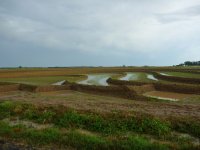vtsnowedin
Elite Member
This is an interesting aspect of tractor design. For any given tire size there is an ideal weight needed to hold the tire against the surface it is running on. If the tire is not loaded enough it will spin before the tractor runs out of power and that extra power becomes useless as far a drawbar pull is concerned. So horsepower to weight ratios matter as well as tire width, diameter and tread design. The big kicker is the surface the tractor is running on as a paved road and a plowed wet field are two very different things.In my searching I found that JD utility tractors tend to be heavy for their HP. Not necessarily a bad thing, just the way they are. An M series JD is around 2500 lbs heavier than the same HP rated M series Kubota. The NH line is more comparable in HP/Weight ratio to Kubota. MY M9540 weighs 5510 from the factory without FEL. By the time I added all my accessories, FEL and filled rears I'm at 9730. A comparable JD M series would be around 8000 from the factory and around 12,000 when equipped.
Tractor designers tackle this in a couple of ways. Designing tractors so the owner can choose several tire sizes and types is one as is adding four wheel drive spreading the load over four drive wheels instead of two. But to get it right they start with a tractor that has enough weight for hard surface work and then let the operator add ballast as needed when working softer ground. Even the heaviest JDs have provisions for front weights and cast wheel weights as well as the ability to load the tires so you can't say they are making them heavier then needed to do the job.
I think the JDs utility and large AG tractors are designed from the assumption that they will be doing tillage work in soft ground most of the time while other brands expect their customers to be doing mostly yard and drive work on harder surfaces. I don't think the extra weight on the JD cost you much when it is not needed and adds to the durability of the whole machine as there is no need to make any part ultra thin to save weight.
There is a balance point here. It would be foolish to design a machine that was so light for it's HP that you had to add excessive amounts of weight anytime you had a job to do off pavement and also foolish to build a machine so heavy it never needed any ballast but couldn't get out of it's own way or look at a mud puddle without getting stuck.
Of course the factories can turn out different models for different users so you can probably find the HP/weight/tire combination you need in your favorite color.
Last edited:
